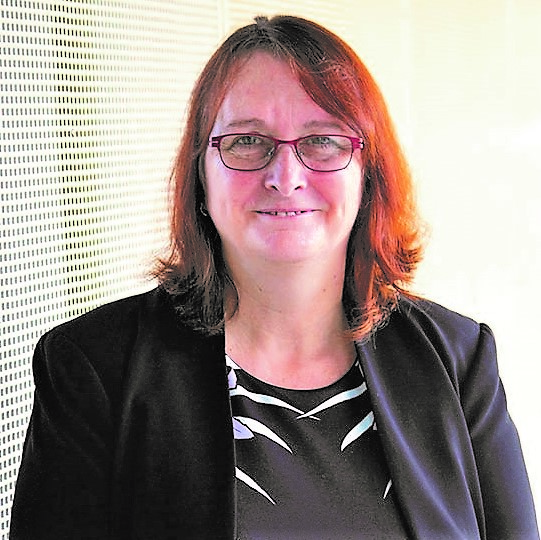
How 57,000 women are shaping health policy in Australia
Researchers from the University of Newcastle and the University of Queensland have created the largest and longest-running women’s health study in Australian history – and its findings are shaping policy and practice at state, national and international levels.
The Australian Longitudinal Study on Women’s Health (also known as Women’s Health Australia) offers the most comprehensive databank of information about women’s health in the country.
Established in 1996, the study collects data about the physical and mental health of more than 57,000 female participants across four age cohorts: those born between 1921-26, 1946-51, 1973-78 and 1989-95.
Regular surveys also capture insights on a broad range of health factors including the use of health services, health behaviours, risk factors, socio-demographic factors and more.
In 2025, the study’s oldest active participants are turning 104, giving researchers unprecedented insights into issues that affect women throughout their lifespan. The unprecedented size and scope of the study has enabled researchers to gain unmatched access into the issues facing women of all ages.
The study is recruiting additional participants to the 1973-78 and 1989-95 cohorts, with the aim of improving the representation of Australian women from South East Asia, North East Asia and Southern Asian backgrounds, those living in regional and remote areas, and those with low socioeconomic status.
Research methodology
The study draws on national administrative datasets such as the Medicare Benefits Schedule, Pharmaceutical Benefits Scheme and National Death Index. It also links to state and territory datasets including hospital admissions, perinatal data and cancer registries. Datasets include:
- physical and emotional health (well-being, major diagnoses, symptoms)
- use of health services (GPs, specialist and other visits, access, satisfaction, hospital admissions, maternity, aged care)
- health behaviours and risk factors (diet, exercise, smoking, alcohol and other drugs)
- time use (paid and unpaid work, family roles and leisure activities)
- socio-demographic factors (location, education, employment, family composition)
- life stages and key events (childbirth, divorce, widowhood).
These datasets serve as a platform for evaluating policies and strategies such as perinatal mental health screening, access to psychological services and health assessments.
Research impact
Research and data from the ALSWH has contributed to policies, guidelines and research programs aimed at improving Australian women’s health, wellbeing and access to health services. Examples include:
- Women at Work: Health Impacts on Current Paid Workforce Participation (2025)
- Working for Women: A Strategy for Gender Equality (2024)
- Fair Work Amendment (Paid Family and Domestic Violence Leave) Bill (2022)
- The National Plan to End Violence against Women and Children 2022-2032
- The National Women’s Health Strategy 2022-2032
- Review of the Pregnancy Care Guidelines (2020)
- National Action Plan for Endometriosis (2018)
- Perinatal mental health guidelines (2017)
- 2014 Australian Government Physical Activity Guidelines
- Choose Health: Be Active. A physical activity guide for older Australians (published 2014)
- The 2013 New South Wales Government Health Framework for Women’s Health
- 2010 National Women’s Health Policy
- The Victorian Women’s Health and Wellbeing Strategy (2010-2014)
- National respite for carers program (2009)
- 2008 Physical Activity Guidelines for Older Australians
ALSWH also makes regular submissions to government inquiries, including recent inquiries into women’s pain and menopause. Additionally, the collaboration contributes to special reports on topics including the lifetime impact of abuse and the significance of global and domestic emergencies, including bushfires and the COVID-19 pandemic.
A 2022 report on sexual violence using ALSWH data continues to inform government inquiries and consultations, including those on universal access to reproductive healthcare and sexual consent laws.
ALSWH collaborators stretch across the globe, with more than 1700 collaborators from countries including Sweden, the United Kingdom, the Netherlands, Japan, South Korea, the United States of America, Switzerland and Argentina.
To support the sharing of new knowledge and knowledge translation, survey information is freely available to collaborating researchers on the project’s website, as are links to over 1,000 scientific publications that leveraged ALSWH data.

Professor Deb Loxton
It is important to us that women from all areas of Australia, backgrounds, and educational levels are given a voice in national policies that impact their health and wellbeing.
Last updated June 2025.
More information:
Aligned with the United Nations Sustainable Development Goals
Read more research impact case studies
The University of Newcastle acknowledges the traditional custodians of the lands within our footprint areas: Awabakal, Darkinjung, Biripai, Worimi, Wonnarua, and Eora Nations. We also pay respect to the wisdom of our Elders past and present.

